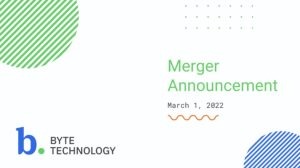It’s been long known to for-profit retailers and marketers across nearly all sectors of our economy that utilizing the power of “big data” is a sure-fire way to optimize business plans and increase profits. Indeed, being able to spot trends before the competition and leverage information in creative ways can be the difference between success and failure for many businesses, and as such a new industry has even emerged that deals solely with helping corporations make sense of the possibilities big data offers.

What exactly is big data? Essentially, big data are extremely large—staggeringly huge, really—data sets that can be analyzed with complex computer programs to reveal patterns, trends and relationships regarding human behaviors and interactions. This is accomplished through big data analytics—the process of obtaining and parsing those data sets—in order to generate useful insights, correlations and patterns that can influence everything from spending habits to fashion trends to what consumers want in next generation products from manufacturers.
However, it’s only been recently that the non-profit sector has begun realizing that those same data sets that help corporations pad their coffers can do they same for their cause-related organization. Essentially, big data analytics can assist non-profits in decision making capacities, such as how to allocate sometimes limited resources and maximize social impacts. For instance, consider this example: a service-oriented organization that provides food resources to the needy can break down exactly how people in a geographic region are in need of a 24/7 meal center. Or how many people in that same region require at-home deliveries of food. Another example could involve detailing needs for afterschool programs that work with at-risk children in low-income neighborhoods and what particular needs they require to be safe and successful. Working with that data, said organization can then funnel their financial and volunteer resources at specific services for the largest positive impact possible.
Of course, considering that non-profit access to big data information is still relatively limited, for the time being organizations should concentrate on obtaining that information from local, state or federal government databases related to education, public assistance records, crime and transportation statistics and the like.
Any non-profit considering tapping into the world of big data should first identify key questions that can be solved from analytical studies, then determine what available data sets and sources are available to them. Also, because many non-profits work on shoestring budgets and with severely limited staffs, it’s important to consider whether or not to tackle the analysis of data on an in-house basis or whether it’s worth securing an outside analytical firm to help. But regardless of how exactly a cause-related organization approaches leveraging big data, the benefits from even a cursory attempt can yield surprising benefits in terms of achieving successful end goals and truly making a deeper impact in their specific sector of non-profit industries.


